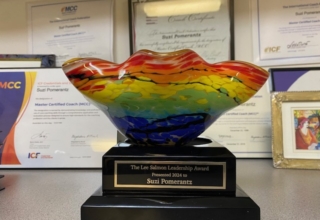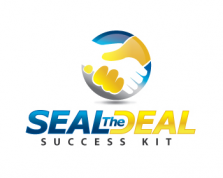
Roles and Format
Participants self-select and organize from among the following roles:
3 hand-picked senior coaches (mastery is important in co-coaching)
5 agents (could be more or less as situation dictates)
1 facilitator
1 recorder
The Dream Team meets with usually one client using this particular form of co-coaching. Ideally this process takes place in a conference room or around a table with 5 chairs, a whiteboard or pad of flipchart paper, and markers. The client is seated at the head of the table in the client chair. Three coaches each take a coaching chair and build on one another’s comments as if they were one coach. The coaches do not compete, cut each other off, speak over each other, or seek to dominate the flow of the conversation; rather they collaborate in a generative and integrative approach. In addition, one chair can be left empty for other people in the room (agents, observers) to take a seat and engage in the conversation as they see fit. A facilitator to direct traffic and a recorder to keep track of major themes and questions round out the cast. In effect, the client is being coached by up to a dozen people, but in a focused manner.
Coaches engage in a collaborative effort, co-creating and engaging with questions and working together to create clarity for the client. A mark of success is when the coaches blend effectively, really listening to each other and mindfully interpreting how to dance together in service of the client’s agenda. Ideas start to bubble up for the entire team and the role of the coaches shifts from clarifying to focusing the client while holding complex and multiple threads of client thought and strategy in partnership with the client and each other.
Agents add other dimensions and perspectives that expand the thinking as the conversation evolves, perhaps observing the process and assisting with the creation of what coaching questions to ask, or advocating on behalf of the client regarding their own areas of expertise or any specific, assigned issues for each agent—for example, Return-on-Investment (ROI), or another particular focus area of importance to the client.
Case Examples
To give you a better idea of this, several case examples illustrate the process. These were created after the ICCO Symposium in 2006, which brought together a limited number of organizational representatives, executive coaches, researchers, and trainers—just 25 in all—to explore questions for real cases in real time. Our colleagues John Lazar and Linda Page provided the initial documentation of these case examples. Here are the stories.
Case Exploration One: One-on-one coaching is already embedded in this consulting firm. Where does it go from here?
“Jake” is an experienced Human Resources Executive who was assigned the coaching portfolio just eighteen months ago. Now that he has mastered the day-to-day operations that match some 70 to 80 partners each year with 45 external coaches, he is ready to ask more strategic questions. “How can I pilot or explore other models than one partner, one coach, in the room?” Jake asks. “How do we touch 3400 partners not touched by the present model of coaching? I worry that our approach is not particularly fresh. What else should I be thinking about that can keep executive coaching fresh, leverageable in terms of cost, effective in terms of reaching more people?”
Download Article 1K Club


















